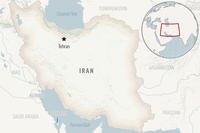The Navy is intensifying efforts to refine designs specs and select models and technologies for a next-generation carrier-based drone through the release of a draft Request for Proposal, service officials said.
The draft RFP was released April 17 to the four vendors currently under contract in a developmental effort with the Navy called preliminary design review, or PDR. The PDR is aimed at exploring design and configuration possibilities and supporting systems for the acquisition of the drone.
The Unmanned Carrier Launched Airborne Surveillance and Strike program, or UCLASS, will serve intelligence, surveillance and reconnaissance and precision strike missions.
Stealth designs and low-observable technologies have been part of the discussion regarding UCLASS requirements, however it is unclear if they are a formal part of the program – as much of the draft RFP and program details are not publically available, Navy officials said.
The purpose of the draft RFP, sent to Lockheed Martin, Northrop Grumman, Boeing and General Atomics, is to solicit industry to design, develop, assemble, deliver, test and integrate the air segment into the UCLASS system, Navy officials said.
“The draft RFP does not commit the government to any contract or expenditure of funds, but it allows the government to survey the market environment for potential bidders and to refine the final RFP before its release, which is planned for summer 2014,” said Jamie Cosgrove, a Navair spokeswoman.
By removing the need to base ISR assets on land in host countries near waters where the Navy will operate across the globe, carrier strike groups will have an organic, deployable ISR asset engineered to fly longer missions than most existing UAS are able.
“The system will consist of an air segment, a control system and connectivity segment, and a carrier segment, which will be developed in partnership with industry with the government acting as lead system integrator,” Cosgrove added.
UCLASS is believed to be of particular relevance for the Pentagon’s Pacific rebalance requiring the U.S. military to operate in the vast, geographically expansive waters; having a carrier based drone that removes the need to base ISR assets on land changes the equation regarding the reach and impact of carrier strike groups and Navy ships at sea.
One analyst said the Navy has been historically slower to embrace UAS technological advances.
“UCLASS is important in terms of developing more persistent ISR capability and it is an important step for the Navy as it works to develop its capabilities with UAS. This program is a symbol of the way the Navy is now approaching UAS,” said Phillip Finnegan, director of corporate analysis at the Teal Group, a Virginia-based consultancy.
Given that the UCLASS program involves an ongoing competition among vendors, firms are reluctant to specify any detail regarding their respective offerings. Nonetheless, there is a little bit of information and expert speculation available regarding the various firms potential offerings for the UCLASS competition.
Lockheed is offering a UAS said to incorporate cutting-edge air-vehicle technologies from the F-35C Joint Strike Fighter and RQ-170 Sentinel UAS, according to the firm’s website. Developed by Lockheed’s so-called Skunk Works division, the Sea Ghost platform includes stealth technologies.
General Atomics is expected to offer its Sea Avenger, a maritime variant of its Predator C Avenger UAS.
“Sea Avenger is a maritime variant, meaning it will be engineered to be able to deal with arrested carrier landings,” Finnegan said.
Very little is available regarding Boeing’s offering for the competition, however there has been some public speculation that their submission could be based upon their Phantom Ray UAS; it is a 36-foot long stealthy looking UAS with a 50-foot wing span which was first introduced in 2010 and first flown in 2011.
The Phantom Ray is being developed for ISR, suppression of enemy air defenses, electronic attack and autonomous aerial refueling, a Boeing statement said.
Finnegan said Boeing is likely to look for ways to leverage its successful F-18 program as a way to lower costs and streamline production.
“Boeing will be looking to take advantage of its existing F-18 supply base which would provide them ready access to proven parts,” Finnegan said.
Northrop officials declined to offer any details regarding their formal offering for the UCLASS program competition, however many are familiar with the firm’s ongoing X-47B demonstrator program.
In fact, many observers expect Northrop to offer a variant of the X-47B, given its success in recent testing.
“We will continue to assess the UCLASS opportunity as details emerge,” a Northrop Grumman statement said.
The X-47B has successfully landed on an aircraft carrier several times as part of a Navy demonstration effort. This summer, the X-47B aircraft is slated for additional carrier trials, including night operations and integrating with manned operations such as an F-18, Northrop officials said.
“The X-47B is for the future of unmanned carrier aviation and a way of reducing risk for future technology,” Catlin O’Connor, Northrop spokeswoman.
Finnegan said the X-47B’s success in testing does not necessarily mean it will be chosen for the UCLASS effort.
“The X-47B is a proven system that has done very well, but it remains to be seen where the Navy will come down in terms of its interest in a less capable system which would be lower cost,” he added.








